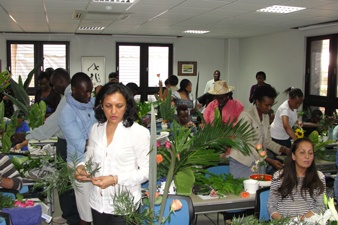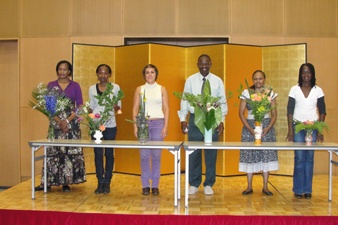Ikebana with a Kenyan Flair Workshop
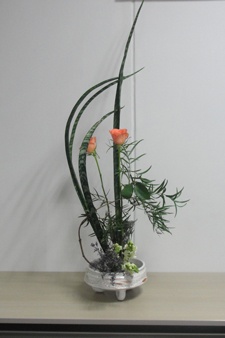
Through the ages, ikebana has evolved leading to the development of many different schools of flower arrangement. The Ikebana workshop was carried out by a team of experts that was led by Mrs. Ishikawa from the Sogetsu School of Ikebana. The workshop which was well attended by both Kenyans and Kenyan residents aimed at showing the participants that with basic knowledge of ikebana, and creative use of locally available materials, they too can make ikebana arrangements.
During the Ikebana Workshop, Mrs. Ishikawa explained that the style of arrangement of flowers is dictated by the nature of the vase used. There are broadly two types of vases used in ikebana, a tall vase and a short and broad one. From these two types of vases, Mrs. Ishikawa explained three possible styles of arrangement. These were: moribana, nageire and moribana without kenzan.
Moribana
Moribana, according to Mrs. Ishikawa, makes use of a short broad vase with a flat base. At the bottom of the vase, a kenzan (needle-point holder) is placed. The kenzan’s purpose is to help hold the plant in place. When cutting flowers, it is important to make the cut while the plant is in the water; a technique called mizukiri. This is important because it prevents air from entering the stalk of the plant. This in turn lengthens the life-span of the flower arrangement. Making a diagonal cut to the stalk of the plant also plays a role in lengthening the life-span of the plant.
Nageire
Nageire makes use of a tall vase. A kenzan is not used when making this arrangement. Instead, a stick that is cut to the same height as the vase is used. One end of this stick is then split open in the middle and it is this stick that supports the flowers. When flowers are placed to be held by the stick, one should ensure that the cut of the flower faces the inner wall of the vase. Lastly, the diagonal cut made to the plants should be parallel to the wall of the vase.

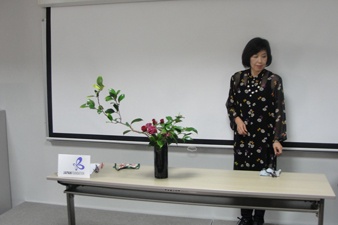
This style as the name suggests is similar to the moribana arrangement. The only difference is that it does not use a kenzan. This is mainly because the vase used in this style has a base that does not support a kenzan. A good example of this kind of vase would be one with a curved base. One trick in making this kind of arrangement is to use a plant with a long stalk. This stalk is then curved and placed at the bottom of the vase. The curved stalk is used to hold the flowers in place. To ensure that the stalk does not break when making the curve, a person should twist the plant slightly and then bend the stalk. This technique applies whenever one desires to make a curve to a plant.
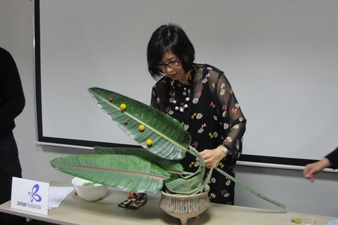
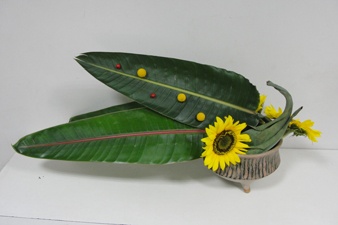
At the end of the demonstration, Mrs. Ishikawa told the participants of the workshop that in Ikebana, the most important thing is the artist’s own impression. She also added that nature offers a lot of variety. From this variety, one should use his/her creativity and individual expression to create a piece. This advice is in line with one of the maxims of the Sogetsu School which states:
“Arranging flowers means to put your heart into your creation. Expressing your thoughts through live plant materials – that is ikebana. “
After Mrs. Ishikawa’s demonstration, the participants of the workshop were then free to collect their own flowers from the collection which had been prepared earlier, and then create their own pieces.

